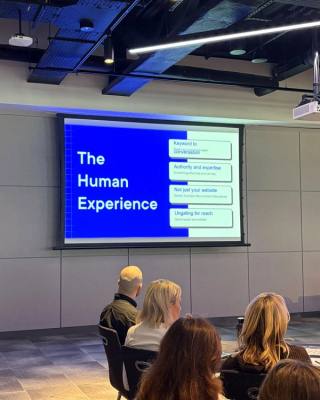Marketing teams can be a liiitttle bit ambitious when it comes to defining their brand.
How often have you seen a “branding doc” containing page after page of adjectives that a brand is supposed to somehow represent? Probably once too many. And to be clear, I have no issue with these documents (I’ve even made some myself!) but we are kidding ourselves if we think they have any relation to what our brands really are.
So if a brand isn’t a piece of paper dreamt up by a bored marketing team, then what is it?
It’s what your audience actually thinks about you and your product. In other words, your reputation. And, like your reputation, a brand can have a dramatic influence on how others perceive and treat you. It can sell your product before you even walk in the door, shorten your sales cycle, and vastly multiply the effect of your promotions. Importantly, your reputation doesn’t change just because you say it does. Instead, it's the result of everything you do (not just “branding” work), and every interaction any member of your audience has with your organisation.
Reputation, good and bad
Of course, a brand can also be negative. To take a personal example, I had a nightmare travel experience over Christmas with Aer Lingus and one of their partner airlines. Between delayed flights, broken systems, and completely unhelpful customer service, we were left stranded and had to pay out of pocket for a hotel. Months later, we’re still waiting on compensation. To top it all off, the Aer Lingus staff we dealt with were dismissive and kept sending us in circles. No amount of 'great fare deals' will make up for the frustration of that trip—when I think of them now, I just think of stress.
Who owns what?
To put it simply, you don’t decide your brand, but your audience does. Your brand lives inside of their heads, not on your slide decks. But this doesn’t mean you lack control. In fact, understanding this lack of ownership is the first step towards actively changing and developing your brand in the minds of your audience. By gauging their views on your strengths, weaknesses, and selling points, you can improve your product, price, placement, and promotion accordingly. You can also be more realistic in how you describe yourself and your product. Focusing on what you can actually effect within your audience’s limited attention span will get you further than crafting elaborate narratives that never leave the meeting room.
The real deal
Thankfully, we understand this at Kooba. For us, branding is not just a pretty logo, but instead a complete understanding of your organisation, your users, and your audience. Of course, beautiful visuals always matter, but nothing can replace a slick, efficient and thoughtful digital experience. Because of this, branding encompasses everything that we do, from accessibility testing to backend development. That’s how we build a brand that really works.








